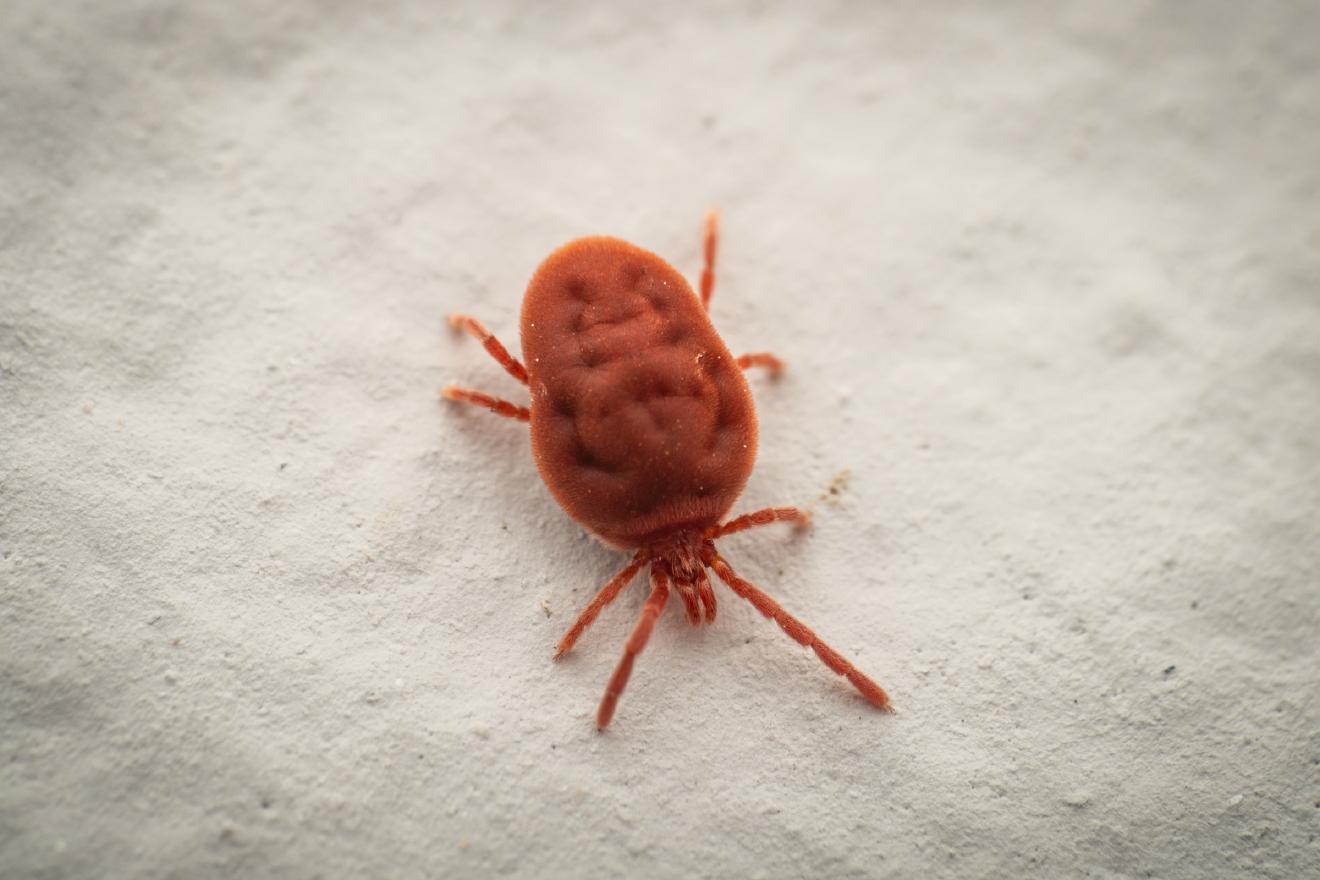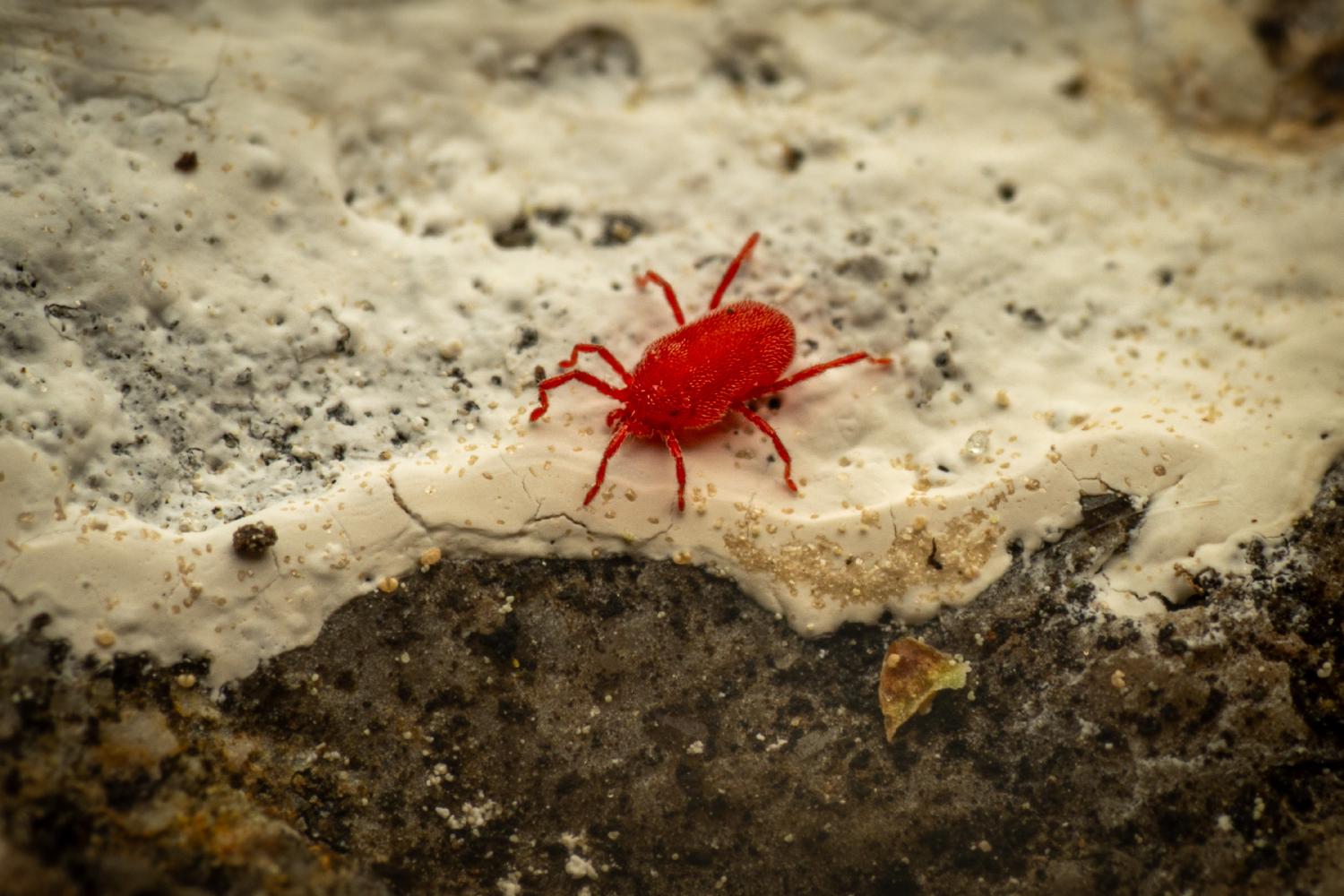Trombidium holosericeum
Lat. “Trombidium holosericeum“
species
subclass
“Mites and Ticks“
1 species
The species being described is a large mite found in northern temperate zones. It has a red, velvety body covered in fine hairs. The mite uses its chelicerae and pedipalps for feeding and sensing its environment. Its bright red color serves as a warning to predators about its toxicity. The mite’s larvae attach themselves to a host, such as an insect or arachnid, to feed and then develop into free-living nymphs that resemble adults. There is limited knowledge about the toxic substances produced by the mite.
Description
This species is one of the largest mites in northern temperate zones, with a body length of about 4 mm (just over 1⁄8 inch). The soft, brightly red body is covered with fine hairs, giving it a velvety appearance. The small eyes are located on stalks. They have scissor-like chelicerae and their pedipalps are used as touch organs. Its bright red color results from carotenoids, warning predators about the toxicity of the mite (aposematism). Almost nothing is known about the toxic substances used, but they are probably contained within the integument. The specific epithet is derived from Ancient Greek ὅλος, holos, “whole” and σηρικ-, sērik-, “silken”.
Biology
While adults live freely and are often found wandering about, searching for small animals and insect eggs for food, the larvae try to find a host to attach themselves to, often an insect like a grasshopper or fly, but also arachnids like harvestmen or spiders. At this stage they appear as red globules on their hosts, sucking body liquid without severely harming the host. These larvae then develop into free-living nymphs that resemble adults.
Further reading
Synopsis of the described Arachnida of the World: Trombidiidae Bellmann, Heiko: Spinnentiere Europas. Kosmos, Stuttgart 2001, ISBN 3-440-09071-X (German)


Ancestry Graph
Further Information
Copyright

This article uses material from the Wikipedia article Trombidium holosericeum the free encyclopedia Wikipedia which is released under Creative Commons Attribution-ShareAlike 4.0 International License). On Wikipedia a list of authors is available.
